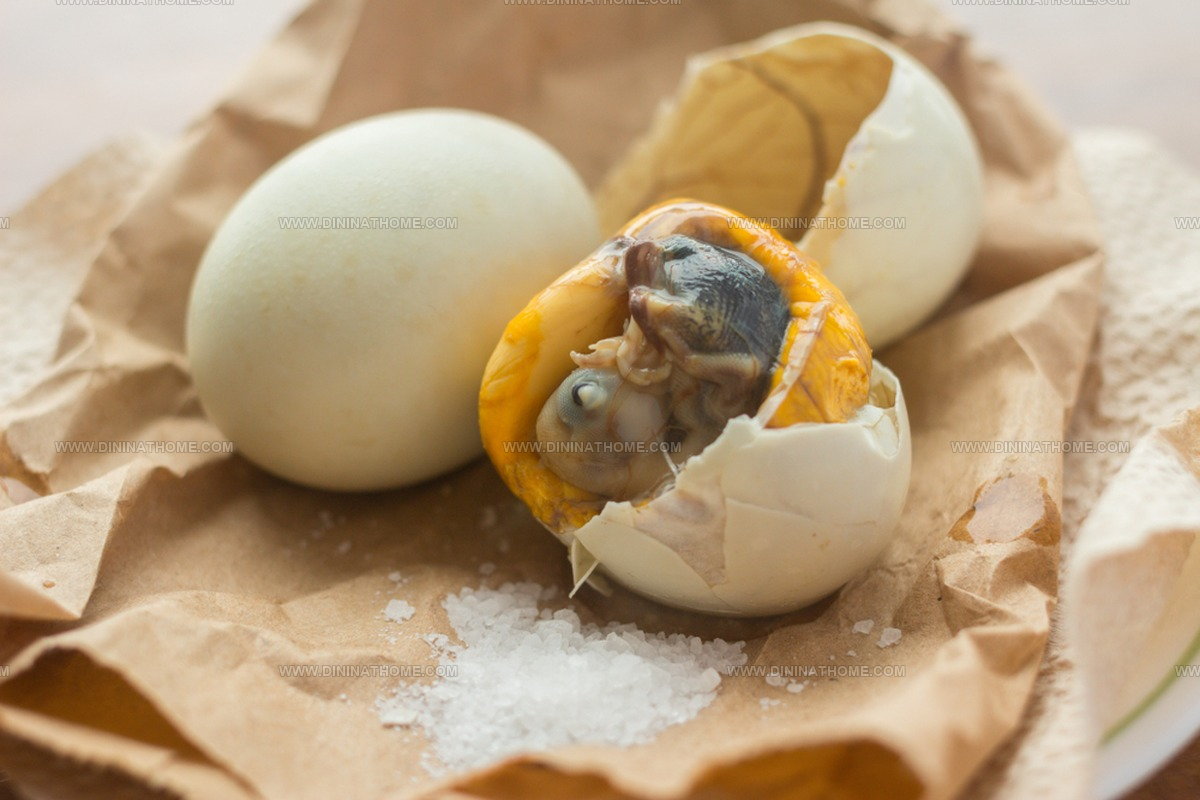What Does Balut Taste Like? A Peek Into This Bold Egg Delicacy
Balut, a controversial street food from the Philippines, sparks curiosity and challenge among adventurous eaters worldwide.
This unique delicacy represents more than just a simple snack - it's a cultural experience that tests culinary boundaries.
Most people react with a mix of fascination and hesitation when first encountering this distinctive egg preparation.
Some find the concept intimidating, while others view it as a delectable protein-rich treat deeply rooted in southeast Asian cuisine.
Cultural traditions surrounding balut reveal fascinating insights into local food practices and regional gastronomic preferences.
Brave food enthusiasts often seek to understand the sensory experience behind this intriguing dish.
Are you curious about what makes balut so special and why it captivates food lovers around the globe?
What Is Balut?
Balut comes from duck or chicken eggs where the embryo grows inside before being cooked and eaten directly from its shell.
Street food culture runs deep in China with many quick meals sold along busy pathways.
People in Philippines really enjoy this special egg dish and consider it a key part of their regular meals.
Chinese traders first brought balut to Philippines sometime between 1565 and 1885.
Soon after, it became woven into local cultural practices.
Language roots show balut comes from Filipino words, which signals its strongest connection to Philippine food culture.
People eat balut as an affordable protein source packed with nutrients.
Locals also believe it has special health benefits and can boost personal energy levels.
Flavor of Balut
Balut offers a gentle, tasty flavor with a hint of fermentation that blends well with its overall profile. Egg juice resembles chicken broth that has been watered down.
Eating the yolk feels like experiencing a fishy custard - solid yet smooth and light. Some people might feel uncomfortable with the visible veins running through the yellow yolk.
Regular cooked chicken or duck eggs taste completely different from this special egg. Small white sections sit near the yolk's top.
People should remove this white part because it carries a harsh, unpleasant texture.
Balut's most challenging section remains its small bird, which carries a tangy, organ-meat-like taste.
Bird meat feels mostly soft like a light mousse, though small crispy parts like beaks and bones might appear depending on incubation time. Its smell differs from typical egg odors, feeling less intense and sharp.
How It Smells
Balut makers in Pateros now buy their eggs from different areas like Bulacan, where big farms produce large quantities.
These new sources create balut with deeper taste and stronger meat-like scents, which explains why people often add vinegar and hot peppers to balance the flavor.
How to Eat Balut
People in Philippines traditionally eat Balut with a pinch of salt, vinegar, chile, and more vinegar to boost dish flavor.
Vietnam and Cambodia follow similar patterns, serving Balut with minimal garnish like lime juice and crushed pepper.
Balut tastes great when scrambled, beaten, and fried with vinegar dip, matching classic preparation methods.
Eating raw Balut risks indigestion and potential food poisoning, so cooking matters.
Balut keeps well for just one day, so immediate consumption works best.
Refrigeration allows safe eating within a week, but cold servings are not recommended.
Cracking takes effort, but a spoon helps remove contents easily.
Swallowing whole provides maximum flavor enjoyment.
Unlike other Filipino dishes, this egg resembles a hard-boiled egg with subtle differences.
Chili vinegar mixture makes it more palatable and not unpleasant.
Balut for First-Timers: Tips and Expectations
Trying balut for the first time can be a surprising but memorable experience, especially if you know what to expect.
With an open mind and a little curiosity, tasting balut can be a fun food adventure.
Balut Nutrition Facts
Balut eggs pack a powerful nutritional punch with 181 calories per serving.
Each egg has 10 grams of fat and just one gram of carbohydrate.
Protein lovers will appreciate that these eggs contain 14 grams of protein.
People should watch their intake because balut eggs have high cholesterol levels at 619mg, which equals 206 percent of daily recommended amounts.
These eggs offer health benefits through beta carotene and vitamin C.
Both nutrients work as strong antioxidants in your body.
Some people also claim balut eggs can boost romantic feelings, making them more than just a simple snack.
Is It Safe to Eat Balut?
People should buy balut only from trustworthy sellers who know their stuff.
While eggs are developing, nasty bacteria like salmonella might start growing.
It's super important to keep cooked balut chilled under 41F (5C) since it's a food that can make you sick if not handled right.
Also, balut eggs have a tiny live embryo inside, so they must be boiled before eating.
Boiling kills all the dangerous germs and makes the egg safe to enjoy.
What Happens After Eating Balut?
Some people have thought balut works like a love potion, according to experts.
People who eat this dish say it gives them strong bursts of power and warmth.
Sexual desire seems to increase for those who enjoy this unique food.
Many still see balut as a cheap meal for people without much money.
Is Balut Good for Weight Loss?
Balut offers health perks for people who enjoy this unique snack.
Filipino moms see balut as a powerful food that helps brain function thanks to its strong nutrition.
One egg contains helpful nutrients like 188 calories, 13.7 grams of protein, 14.2 grams of fat, 116 milligrams of calcium, and 2.1 milligrams of iron.
Is Balut Keto-Friendly?
Balut fans who prefer a milder option might want penny as a vegetarian alternative without the fetus.
People can also choose tokneneng, which are deep-fried battered boiled eggs, or kwek-kwek made with quail eggs.
Someone following a keto diet would need to skip the breading step in this recipe.


James Walker
Lead Recipe Developer & Culinary Educator
Expertise
Southern Cuisine & Farm-to-Table Cooking, Recipe Development & Testing, Culinary Education & Instruction
Education
School: Auguste Escoffier School of Culinary Arts
Program: Diploma in Culinary Arts and Operations
Focus: Comprehensive training in classical and modern culinary techniques, kitchen operations, and farm-to-table practices.
James didn’t learn cooking from a TV show, he learned it from busy kitchens, family gatherings, and long afternoons spent testing recipes the hard way.
After training at the Auguste Escoffier School of Culinary Arts, he brought his love for real, down-to-earth food to every dish he makes.
At Dining At Home, James loves building recipes that feel familiar but still have something special, like adding a twist to a classic or making a slow Sunday dinner feel brand new.
When he’s not in the kitchen, you’ll probably find him swapping garden tips at the farmers’ market or teaching his daughter how to flip pancakes without a mess (almost).